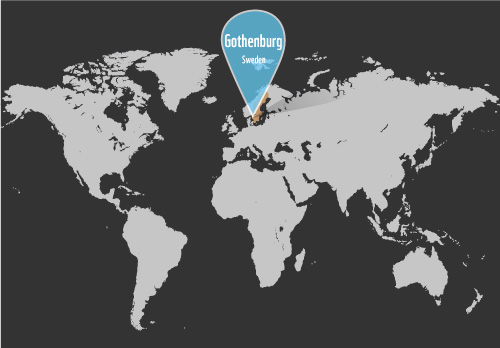The WWF is run at a local level by the following offices...
GOTHENBURG

Ambitious climate plan
The overall goal is to reach a globally sustainable and equitable level of greenhouse gas emissions by 2050, which is interpreted as 1.9 tonnes of carbon dioxide equivalents per inhabitant per year. This isn’t easy for a western industrial city to achieve; according to Gothenburg’s estimates, its current consumption-based emissions stand at 8 tonnes per capita, so achieving this goal will entail more than a 75% reduction of total emissions. Gothenburg has set intermediate objectives:
-
by 2020, to reduce direct emissions by 40% from a 1990 baseline, and to reduce energy use in homes by 30% and electricity use by 20% from a 1995 baseline
-
by 2035, to reduce emissions within municipal boundaries to 2 tonnes of carbon dioxide equivalents per person and to reduce consumption-based emissions to 3.5 tonnes of carbon dioxide equivalents per person.
To achieve this, Gothenburg has embarked on a range of measures across the whole field of urban sustainability, including the West Swedish Agreement, a massive investment in the region’s transport system that helps to enable the following: a modal shift to public transport and cycling; investments in wind power and biogas production; and outreach efforts to reduce the climate impact of air travel, food, and citizens’ consumption of consumer goods.
First city with green bonds
In 2013, Gothenburg became the first city in the world to issue green bonds, a financial tool to combat climate change designed in 2008 by the World Bank. As of March 2016, the City of Gothenburg had issued $415 million worth of green bonds, financing a special portion of the city’s infrastructure investments and other projects, and creating new partnerships internally between the financial and environmental departments of the city. Several other municipalities and local governments have followed Gothenburg’s example, including California and the City of Johannesburg. This city-level leadership and collaboration is an aspect of sustainable development which urban actors rarely even engage with: financial instrument innovation.
The global response to Gothenburg’s work with green bonds and consumption-based emissions has been tremendously positive. In 2014 alone, more than 40 delegations from 22 countries visited Gothenburg to look at the city’s initiatives. And Gothenburg has been invited to take part in the World Bank’s development of a new training program, the City Climate Planner Professional Certification Program.
Want to know more about Urban solutions?
Contact Barbara Evaeus
Global Communications Manager,
WWF One Planet City Challenge
+46 70 393 9030
barbara.evaeus@wwf.se
Text by: Martin Jacobson and John Manoochehri
Last edited: 2017-03-15


